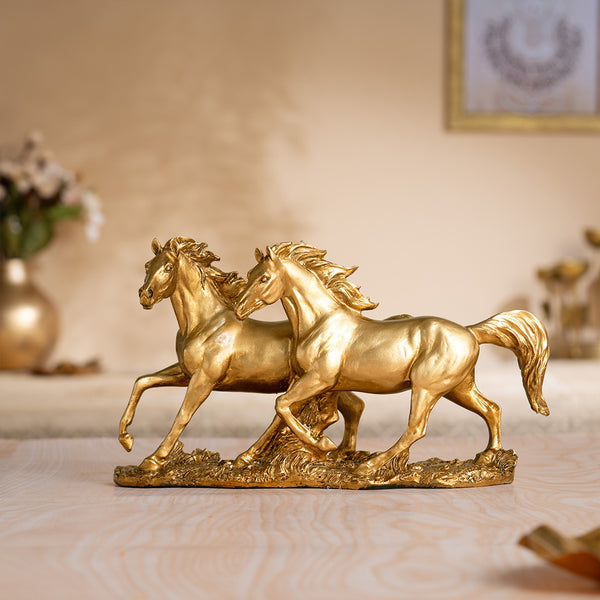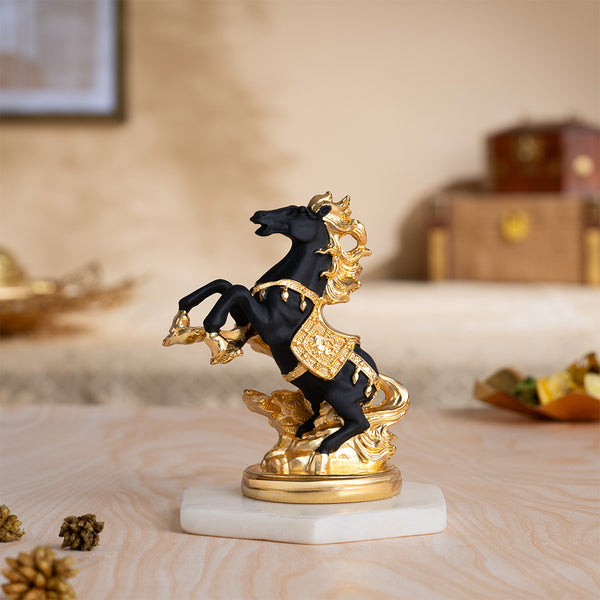Have you ever wondered about the energy your home holds? Vastu Shastra, the ancient science of architecture, offers fascinating insights into creating spaces that radiate positivity. Among the many elements it discusses, horse statues for home often spark curiosity. Why? Because these statues are more than just beautiful pieces of decor—they symbolize strength, speed, and progress.
But can we keep horse statues at home? If yes, where do they belong? What’s the right placement according to running horse statue Vastu direction? Whether you’re drawn to their aesthetic charm or spiritual significance, understanding the meaning of horse statues in Vastu can help you channel their energy effectively.
In this blog, we’ll explore the vastu horse statue guidelines, delve into their symbolic value, and share tips on using them as home decor while aligning with tradition. From galloping horses to the striking statue of a knight on a horse, there’s a lot to uncover!
The Symbolism and Significance of Horses in Vastu
In Vastu Shastra and Hindu mythology, horses symbolize power, movement, and resilience. They’ve been companions in ancient tales and carriers of divine energy, embodying progress and strength.
Their presence aligns with Vastu’s goal of channeling positive energy into living spaces. A horse statue for home is believed to bring growth, success, and vitality when positioned correctly. For instance, a running horse statue symbolizes momentum and prosperity, while paired horses signify harmony and balance. These figures are popular among those seeking career growth or personal development.
Placement is key. The South zone boosts fame and recognition, while the East enhances motivation and vitality. The posture also matters, a running horse statue promotes progress, while a stationary one suggests stability.
When thoughtfully placed, horse statues aren’t just decorative. They uplift the spirit of your home, fostering positive energy and driving success.

Vintage Running Horse Antique Statue (12 Inch)

Feng Shui Knight Horse - Gold Plated
Can We Keep Horse Statues at Home According to Vastu?
The debate around horse statues in Vastu often focuses on their symbolic value and positioning. Yes, they can be powerful additions to your home decor, but placement is crucial.
Key Factors to Consider:
1) Direction:
The direction is critical. Running horse statues Vastu direction suggests placing them in the South to enhance fame and recognition. The East or Southeast is ideal for growth and positivity in personal and professional life.
2) Material:
Choose natural materials like brass, wood, or marble for your horse statue home decor. Synthetic materials may block energy flow.
3) Size and Posture:
The size should suit your space. Running horse statues symbolize progress, while stationary ones suggest stability. Pick based on your aspirations.
4) Expert Advice:
Experts recommend placing single or paired horse statues in living rooms, offices, or study areas. Avoid bedrooms or cluttered spaces. Proper placement can attract opportunities and improve relationships.
By following these principles, horse statues can eliminate stagnation and inspire dynamic energy, making your home a space of growth and positivity.

Creative Solutions for Displaying Horse Statues at Home
Here are some innovative ideas for showcasing horse statues in line with Vastu:
Indoor Displays:
1) Decorative Niches:
Create a recessed shelf in your living room or study. Place the statue facing South or East to channel energy effectively.
2) Artistic Pedestals:
Elevate the statue on a pedestal to make it the focal point. Materials like wood or metal complement the decor while harmonizing energy.
3) Gallery Wall Accent:
Combine the horse statue with artwork or photos for a curated look.
Outdoor Placements:
1) Gardens or Courtyards:
Position statues near pathways or water features to symbolize vitality. Outdoor areas allow for greater flexibility with Vastu horse statue guidelines.
2) Balcony Corners:
For smaller homes, a balcony corner works well for integrating the energy of a horse statue.
3) Balancing Aesthetics and Vastu:
Ensure placement aligns with both Vastu principles and your personal style. Harmonizing design and energy enhances your space’s positivity.
Cultural and Personal Preferences in Vastu Practice
While Vastu Shastra provides general guidelines, personal beliefs and cultural influences also play a role. In some cultures, horse statues symbolize relentless progress and are used in rituals or as decor. Others may prefer symbols tied to their traditions.
Your preferences matter—what feels auspicious for one person may not for another.
A statue of a knight on a horse, for example, can reflect personal aspirations while maintaining Vastu relevance.
The key is to balance expert advice with your values. Whether it’s a running horse statue for momentum or a stationary one for stability, the statue should resonate with your goals.

Conclusion
Adding a horse statue for home can beautifully blend symbolism, tradition, and personal meaning.
In Vastu, horses symbolize power, growth, and vitality. Properly placed, these statues channel positive energy into your home, enhancing success and balance.
Factors like direction, material, size, and posture influence their impact. The South and East zones are ideal for placing running horse statues, promoting growth and recognition. Meanwhile, a horse statue home decor choice can reflect both your style and aspirations.
By thoughtfully blending Vastu horse statue principles with your personal values, you can create a space that feels harmonious and fulfilling. Whether it’s a running horse statue, paired figures, or a statue of a knight on a horse, these additions can symbolize progress and positivity in your life.








